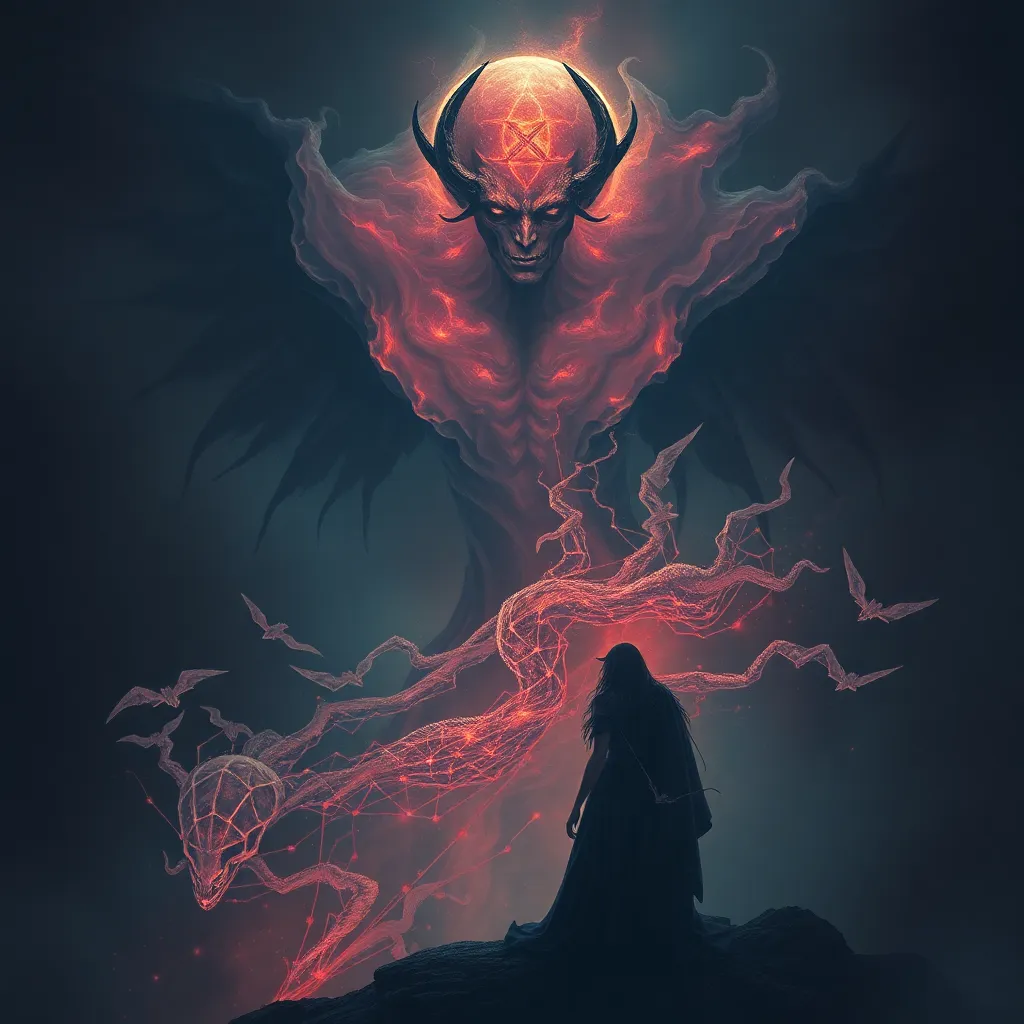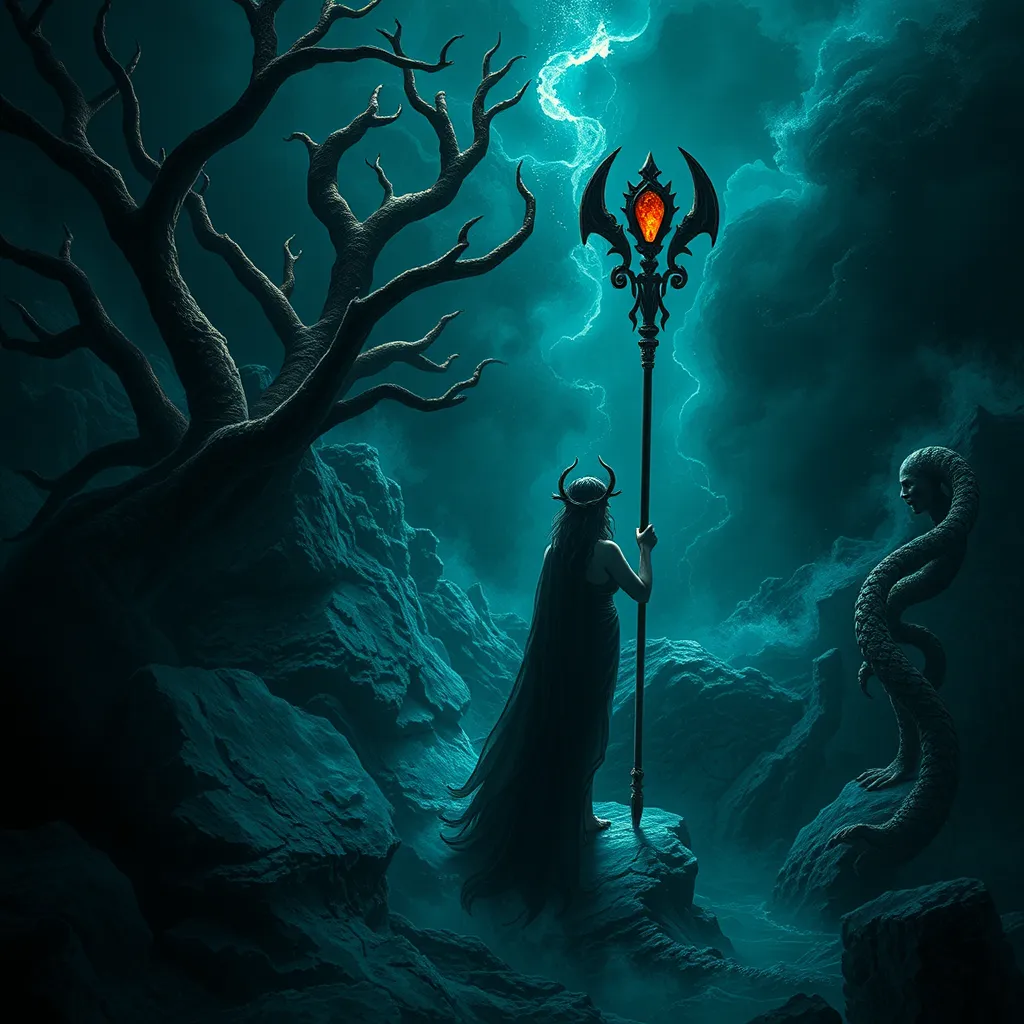The Dark Arts and Skinwalker Lore: The Occult Side of Shapeshifting
I. Introduction to Shapeshifting
Shapeshifting has long captivated the human imagination, appearing in folklore and mythology across cultures. Defined as the ability of a being to transform into another form, it serves as a potent symbol of duality, transformation, and the unknown. From ancient tales to modern narratives, shapeshifting embodies the complexities of identity and the boundaries between human and animal, the mundane and the mystical.
The significance of shapeshifting varies widely among cultures. In some traditions, it is celebrated as a gift, a means of connecting with nature or the spirit world, while in others, it is viewed with fear and suspicion, often associated with malevolent forces. This duality is particularly evident in the context of the Dark Arts, a realm where magic and malevolence intersect, and shapeshifting takes on a more sinister connotation.
II. Historical Context of Skinwalker Lore
The Skinwalker myth is deeply rooted in Navajo culture, originating from rich traditions and beliefs surrounding the supernatural. In the Navajo language, a Skinwalker is referred to as “yee naaldlooshii,” which translates to “with it, he goes on all fours.” This term reflects the belief in individuals who can transform into animals, often for the purposes of witchcraft or malevolent acts.
Traditionally, the Navajo people held strong beliefs in the powers of healing and protection, but they also recognized the darker aspects of their spiritual world. Skinwalkers are often thought to be witches who have gained the ability to shapeshift through the acquisition of dark knowledge. This transformation is often linked to the violation of cultural taboos, such as the desecration of sacred rituals or the harming of others.
Over time, the narrative of Skinwalkers has evolved, influenced by external factors such as colonization, cultural exchange, and modern media. Today, the tales of Skinwalkers serve as cautionary stories that warn of the dangers of straying from traditional values and practices.
III. The Dark Arts: An Overview
The Dark Arts are often characterized by their association with malevolent magic, witchcraft, and the manipulation of supernatural forces for selfish or harmful purposes. Practitioners of the Dark Arts may seek power, control, or revenge, and their actions are frequently viewed with fear and mistrust.
In the context of shapeshifting, the Dark Arts manifest as the ability to transform into animals or other beings to deceive, haunt, or harm others. This connection is particularly evident in the tales of Skinwalkers, who are believed to employ their shapeshifting abilities to instill fear and exert control over their victims.
Throughout history, various figures have been associated with the Dark Arts, from infamous witches in medieval Europe to shamans who wield both healing and destructive powers in different cultures. These figures often blur the lines between good and evil, illustrating the complex nature of human morality.
IV. Skinwalkers in Navajo Belief Systems
In Navajo spirituality, Skinwalkers hold a unique and significant role. They are not merely figures of fear but are also emblematic of the dangers that arise when individuals misuse their powers or stray from the community’s values. The existence of Skinwalkers serves as a reminder of the balance that must be maintained between good and evil.
Encounters with Skinwalkers are steeped in ritual and taboo. The Navajo people believe that discussing Skinwalkers openly can attract their attention, leading to dire consequences. As such, rituals to protect oneself from Skinwalkers often involve traditional prayers, protective herbs, and other spiritual practices.
The moral implications of shapeshifting in Navajo culture are profound. Shapeshifting is seen as a gift that can be used for healing and protection; however, when used for malicious purposes, it becomes a curse. This duality emphasizes the importance of ethical conduct and respect for the natural world.
V. Comparisons with Other Cultural Shapeshifters
While Skinwalkers are unique to Navajo culture, many other cultures have their own shapeshifting legends, each with distinct characteristics and meanings. Some notable examples include:
- Werewolves: In European folklore, werewolves are humans who transform into wolves, often during a full moon. This transformation is typically associated with loss of control and primal instincts.
- Kitsune: In Japanese mythology, kitsune are foxes that can shapeshift into human form. They are often depicted as wise and benevolent beings, capable of both good and mischief.
- Selkies: In Scottish folklore, selkies are creatures that can transform from seals into humans. Their tales often explore themes of love and longing, as well as the consequences of crossing boundaries.
These legends showcase both similarities and differences in the portrayal of shapeshifters across cultures. While some shapeshifters embody fear and danger, others represent transformation and adaptability. The connection between shapeshifting and the Dark Arts also varies, with some cultures embracing the concept of shapeshifting as a natural part of existence, while others demonize it.
VI. Modern Interpretations and Representations
In contemporary media, Skinwalkers have gained prominence as figures of horror and intrigue. Films, television shows, and literature often depict them as malevolent beings that prey on unsuspecting victims. These portrayals, while captivating, frequently distort traditional beliefs and contribute to misconceptions about Navajo culture.
The impact of pop culture on traditional narratives cannot be overstated. While these modern interpretations can introduce new audiences to the lore of Skinwalkers, they often reduce complex cultural beliefs into mere entertainment. This can lead to a misunderstanding of the significance of Skinwalkers within Navajo spirituality and the broader implications of shapeshifting in various cultures.
Furthermore, misconceptions stemming from modern portrayals can perpetuate stereotypes and reinforce harmful narratives about Indigenous peoples. It is crucial to approach these topics with sensitivity and respect for the cultural contexts from which they arise.
VII. The Psychological and Sociological Aspects
The belief in Skinwalkers and shapeshifters often stems from deep-seated fears of the unknown. In many communities, these fears manifest as cautionary tales that serve to educate and protect against potential dangers. The psychological interpretations of shapeshifting phenomena can reveal much about human fears, desires, and the complexities of identity.
Sociologically, shapeshifting lore can strengthen community bonds by providing shared narratives that reinforce cultural values. These stories can act as mechanisms for social control, guiding behavior and maintaining social order. In times of crisis or uncertainty, the belief in shapeshifters may also serve as a way to explain unexplainable phenomena, providing comfort amidst chaos.
VIII. Conclusion: The Enduring Legacy of Skinwalker Lore
The significance of shapeshifting in the Dark Arts, particularly through the lens of Skinwalker lore, highlights the intricate relationship between culture, fear, and identity. These narratives carry profound meanings that resonate across generations, serving as both warnings and teachings about the nature of power and responsibility.
Preserving cultural narratives like that of the Skinwalker is crucial for understanding the complexities of human belief systems. As we explore these rich traditions, we must approach them with respect, acknowledging their historical and cultural significance.
Future directions for research and understanding of shapeshifting myths should focus on the interplay between traditional beliefs and modern interpretations, fostering a greater appreciation for the diverse ways in which cultures navigate the realms of the known and unknown.



